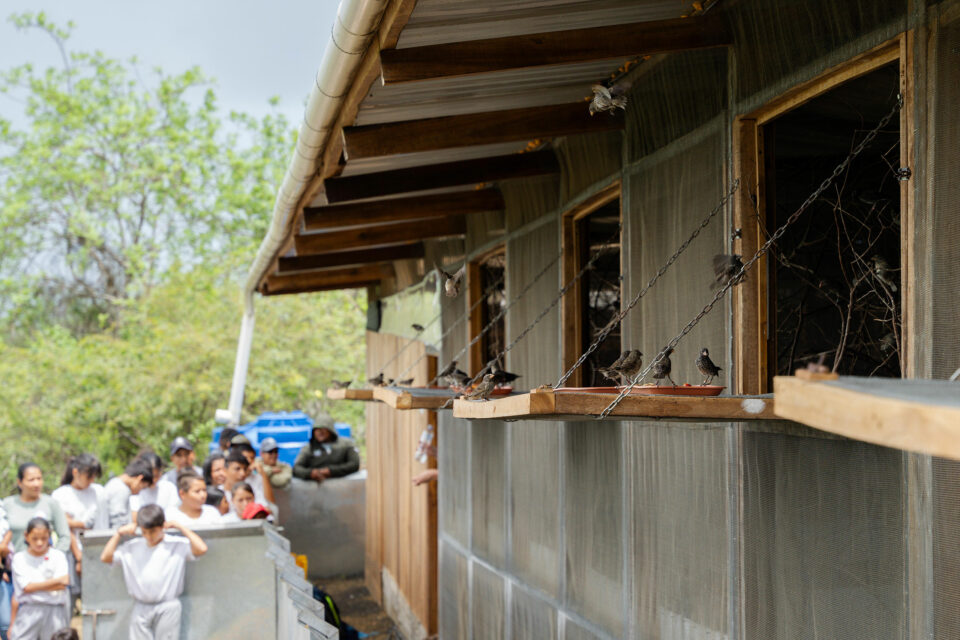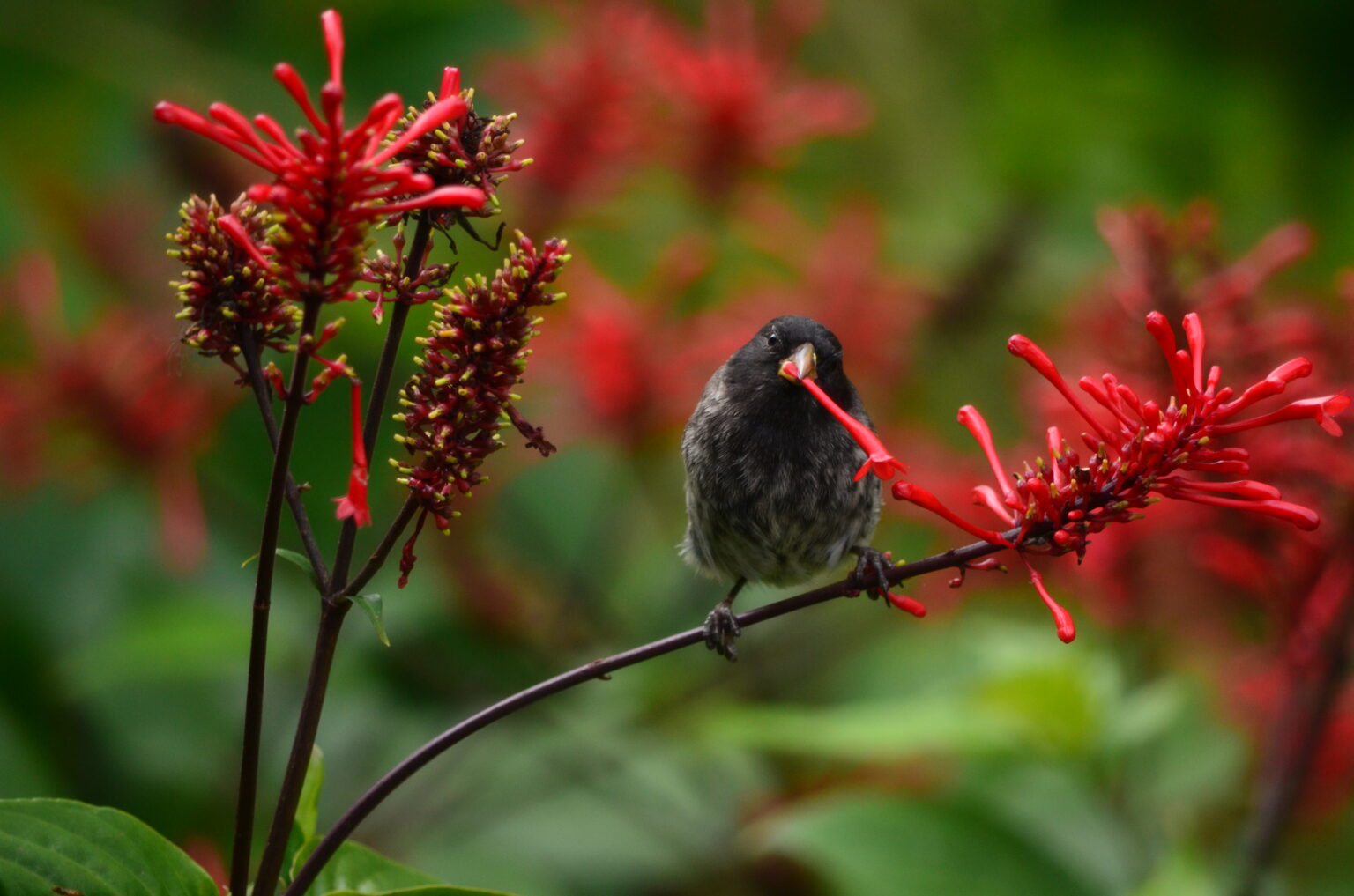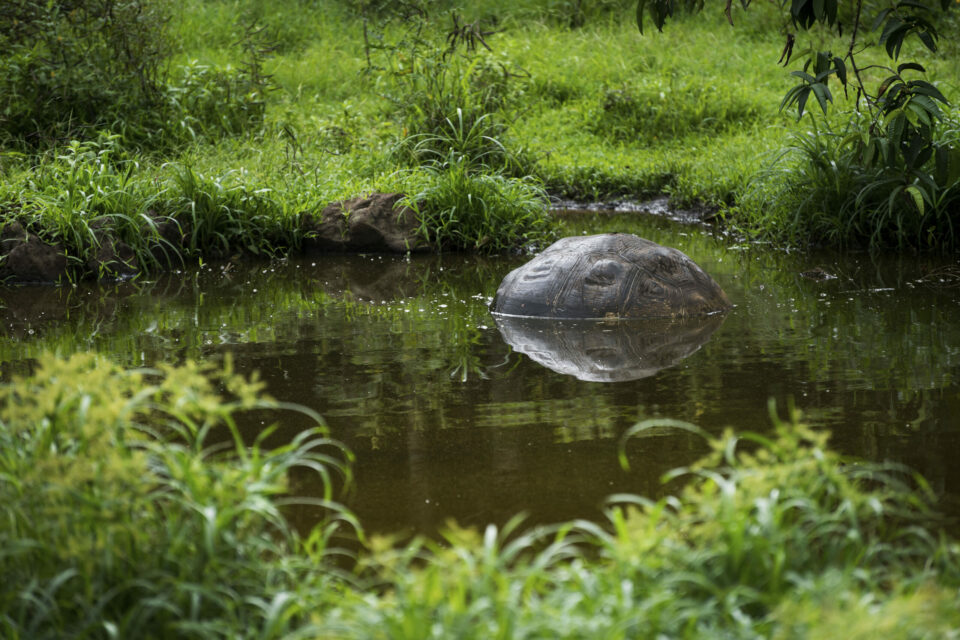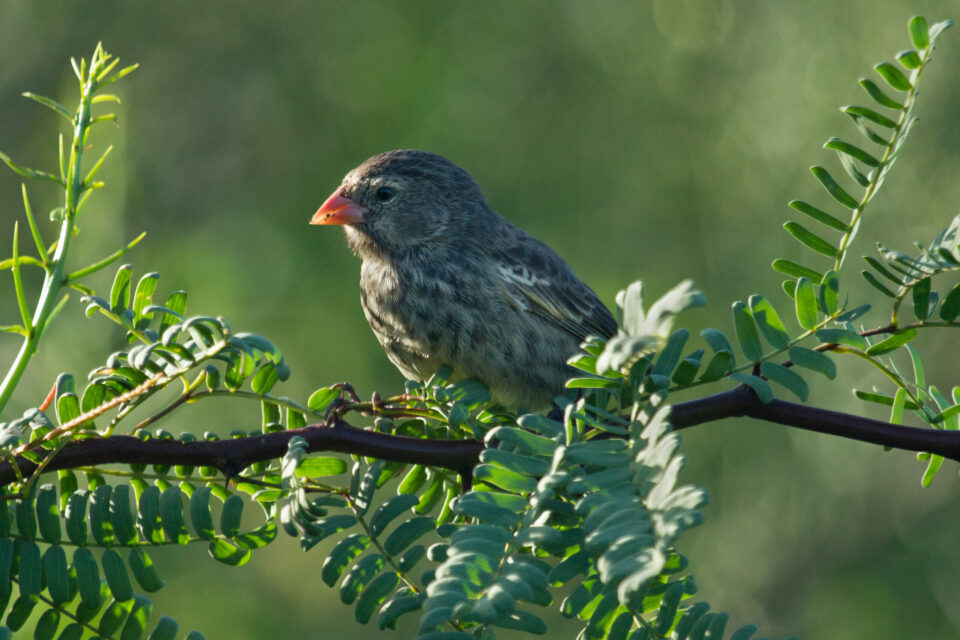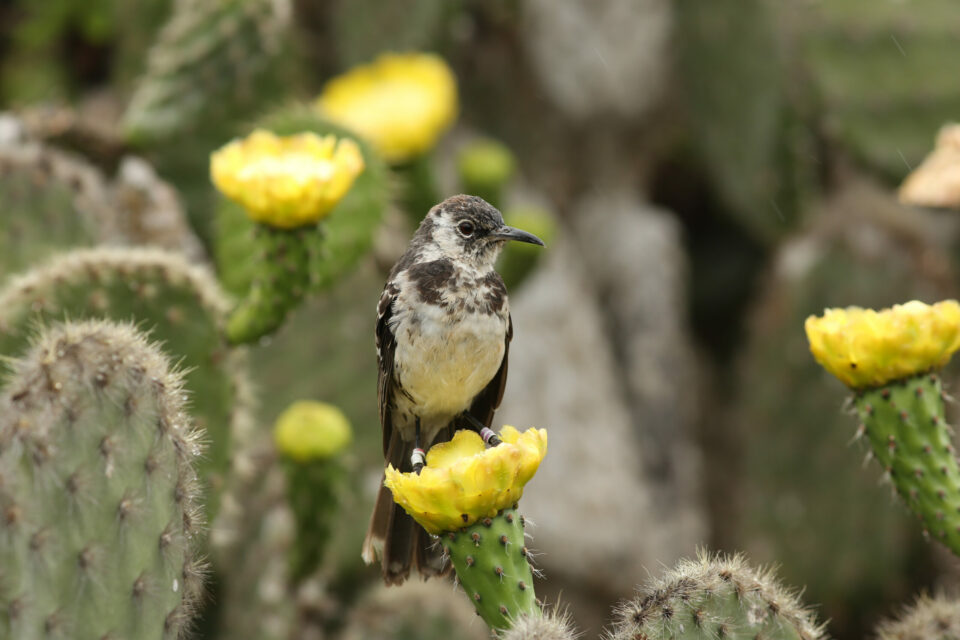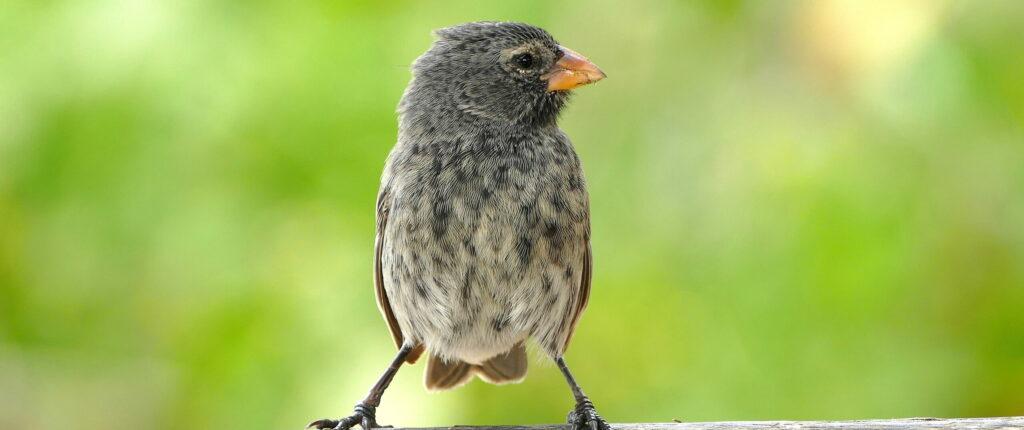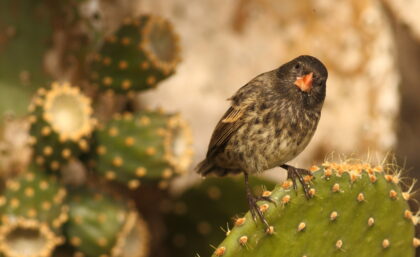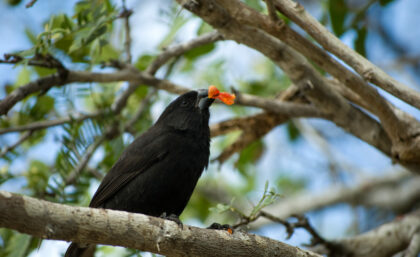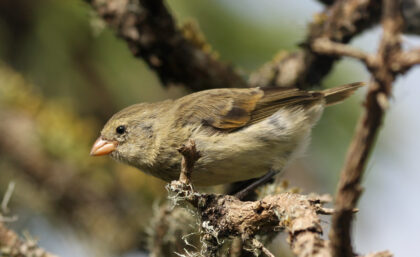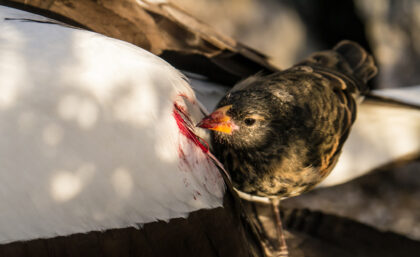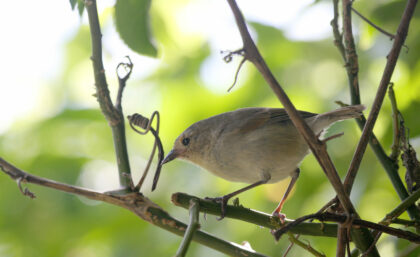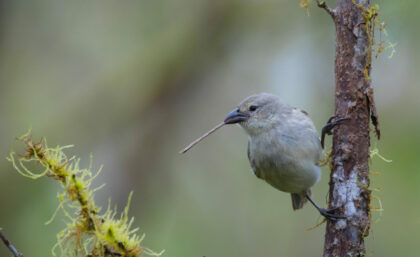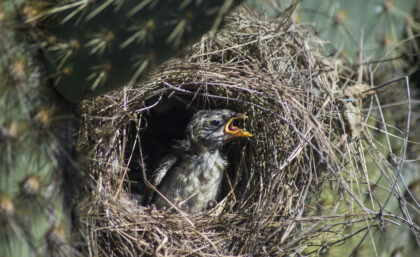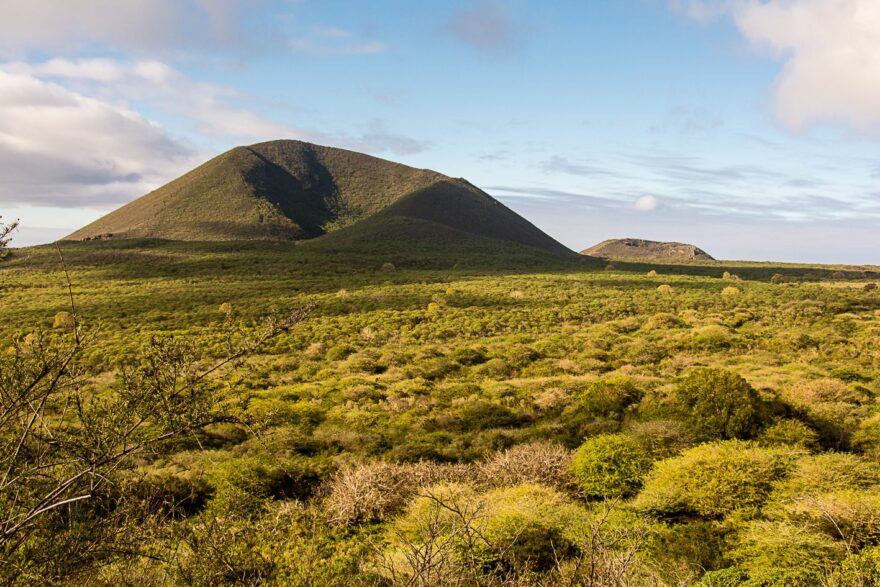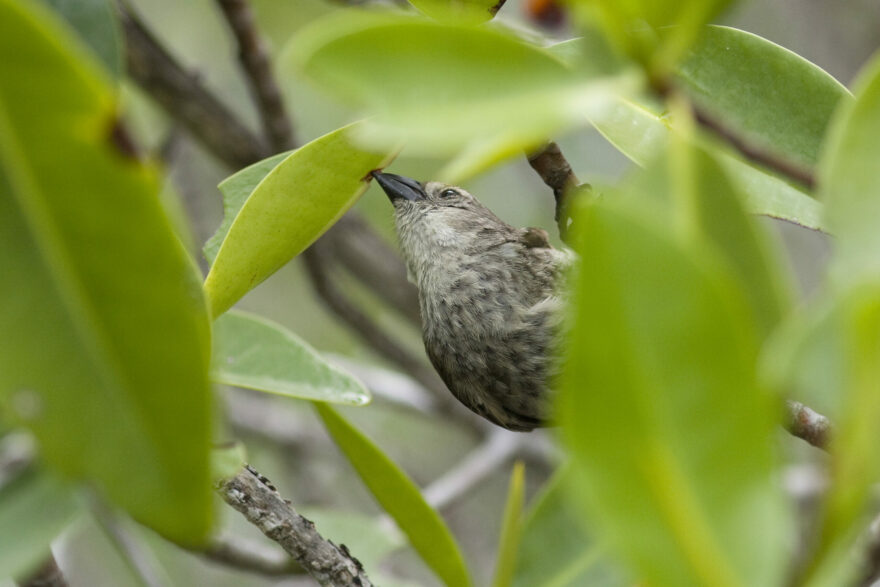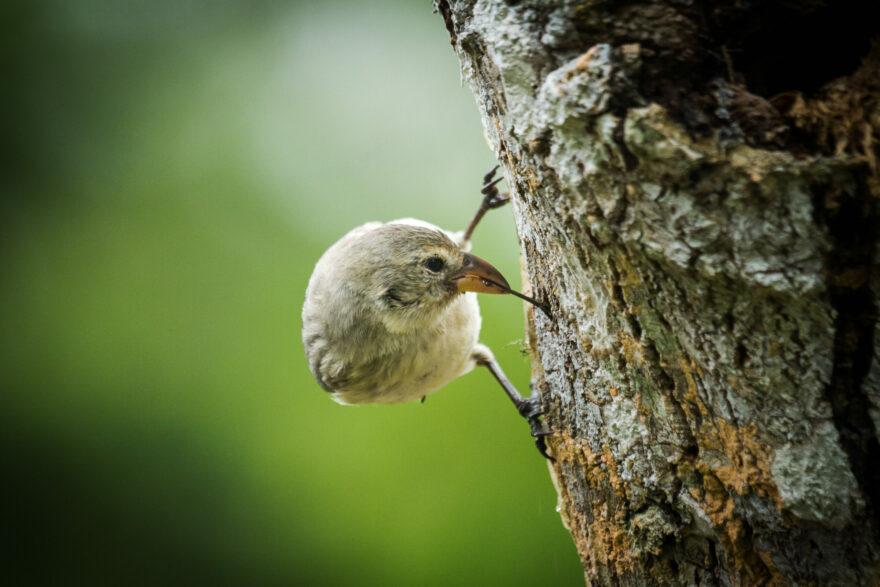The finches found in Galapagos are:
Green warbler finch (Certhidea olivacea). Vulnerable. Until 2008, it was thought that this was the same species as the grey warbler finch.
Grey warbler finch (Certhidea fusca). Least Concern. These finches are found mostly on smaller, drier islands.
Mangrove finch (Geospiza heliobates). Critically Endangered. These rare finches are only found in a small area on Isabela.
Woodpecker finch (Geospiza pallida). Near Threatened. This finch is well-known for its use of tools. It can use a twig, stick or cactus spine to dislodge invertebrates from trees.
Large tree finch (Geospiza psittacula). Vulnerable. This species has a large, powerful bill with a thick base and is found on a number of the Islands.
Medium tree finch (Geospiza pauper). Critically Endangered. This finch is only found in the highlands of Floreana.
Small tree finch (Geospiza parvula). Least Concern. These finches are small and have distinctive short, curved beaks which they use to mostly feed on insects.
Large ground finch (Geospiza magnirostris). Least Concern. The largest of Darwin’s finches both in size and beak size. They have large, short beaks for cracking large seeds and nuts.
Medium ground finch (Geospiza fortis). Least Concern. These finches are found on a number of the Islands and feed mainly on seeds.
Small ground finch (Geospiza fuliginosa). Least Concern. One of the most common species of finch, found throughout the Islands.
Española cactus finch (Geospiza conirostris). Vulnerable. This finch is one of the most variable of the finches in appearance and they feed on a range of foods including Opuntia cacti. Some taxonomic authorities distinguish the Española cactus finch from the Genovesa cactus finch (Geospiza propinqua), while others still consider them conspecific.
Common cactus finch (Geospiza scandens). Least Concern. As their name suggests, they feed mostly on Opuntia cacti. When the Opuntia are in flower, the finches feed almost exclusively on pollen and nectar. During other times of the year, they will feed on Opuntia seeds and fruit. They will also feed on a range of other vegetative foods and invertebrates.
Sharp-beaked ground finch (Geospiza difficilis). Least Concern. Although most populations feed mainly on seeds, those finches found on the small and remote islands of Wolf and Darwin often drink the blood of large seabirds, such as boobies. Some taxonomic authorities consider the so-called vampire finch to be a separate sub-species (Geospiza septentrionalis), while others still consider it conspecific. The same is true of the Genovesa ground finch (Geospiza acutirostris).
Vegetarian finch (Platyspiza crassirostris). Least Concern. The vegetarian finch is one of the largest Darwin’s finches, and mainly eats leaves and shoots, along with fruits and tree sap. Although categorised as ‘Least Concern’ by the IUCN, the vegetarian finch is locally extinct on Floreana island, with the last recorded sightings in 2004 and 2008.
